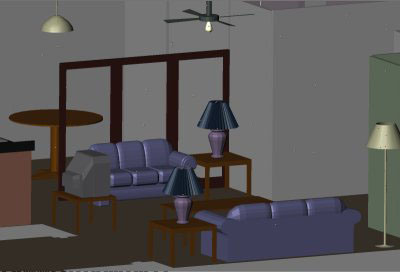Better Living Through Technology
Smart Home Technology Will Allow Patients to Stay in Their Homes Longer
Everyone has had this moment: you’re running late and you just have to grab your keys, but they seem to have magically disappeared. For some this conundrum might quickly become a thing of the past with the introduction of smart home technology: A technology that may not only help you remember your keys, but will remind you to turn off the stove top as well.
As it expands throughout our everyday lives, artificial intelligence is growing increasingly smarter—perhaps ultimately smart enough to provide an aging generation of Americans the opportunity to live out their lives more independently and securely than any generation before them.
In less than 35 years, nearly a quarter of the U.S. population will be 65 years or older, and many of those will be physically or cognitively restricted. Providing this growing population with the assistance it needs to meet the challenges of a changing world will require innovative approaches founded in the advanced technologies of artificial intelligence and machine learning.
“Our ultimate goal is to keep people living independently,” said Diane Cook, Huie-Rogers Chair and Professor of Electrical Engineering and Computer Science at Washington State University. “This is already a tremendous success in the UK, where people are able to stay in their homes for an average of 18 months longer than without this technology.”
Over this past year Cook and her fellow researchers have performed a number of studies in the smart home lab on campus to automatically recognize activities that residents are performing in the apartment. This allows for smart environments to determine if individuals are performing the necessarily activities, or ADLs (Activities of Daily Living), that they need to complete in order to live independently at home
Most recently, Cook began a study in which healthy younger adults, healthy older adults and older adults with dementia performed ADL activities in the smart apartment. This allowed the researchers to determine how individuals in these three groups perform activities differently and if memory difficulties that are noticed in laboratory assessments manifest themselves as the individuals perform activities in an apartment or home. So far, the laboratory-based assessments are closely aligning with difficulties individuals experience in performing ADL activities in the apartment.
In addition, Cook implemented a number of cueing strategies to aid individuals in completing activities. Some individuals, especially those suffering from dementia, will have difficulty remembering the steps of a task. The smart environment should be able to detect when they are having difficulty and aid them with completing the task by giving an audio or video cue. In this study she generated a set of indirect cues (audio hints for each step), direct cues (audio instructions for each step) and multimedia cues (video showing each step) for the ADL activities. The results are looking good and indicate that individuals who were not able to complete the activities independently were able to complete them with the aid of these cues.
WSU is one of a handful of universities that actually have a smart home test lab on site as the labs require a myriad of expertise. Research into smart environments crosses many disciplines, including robotics, pervasive and mobile computing, middleware, agent-based software, sensor networks, multimedia computing, sociology, and pharmacology. What differentiates the WSU smart home research lab from the others is that WSU researchers are examining how to actually train computers to learn and adapt to an occupant’s behavior.
A big question many have with regard to artificial intelligence in the home is what this means for privacy. While some may feel that introducing these technologies into their homes creates an environment in which big brother can watch your every move, Cook is resolute to ensure the technology will only be used for health and safety. In fact, says Cook, the loss of privacy at an assisted living facility is far greater than the loss of privacy from living in a smart home.
“We can develop smart homes so that raw videos aren’t stored or transmitted outside,” she said. “There is no loss of privacy – only the individual living in the home can decide what is transmitted outside. Furthermore, there is a lot you can do with just motion sensors.”
This research however is not just about the patient – caregivers and families stand to benefit tremendously from this research.
“Caregivers sacrifice a lot and it certainly takes a toll on their emotional and physical well-being,” Cook said.
With the smart home technologies in place, caregivers can be alerted with critical information and won’t have to worry as much when they are not there to take care of a family member or friend. “For example, they’ll be able to sleep through the night without the fear of their loved one wandering about,” she said.
This research is laying the groundwork for a future in which we can stay in our homes longer and rest assured – your home will not look like something out of a science fiction movie.
“It just looks like a regular apartment or house,” said Cook of the smart home design. “Our goal is to design it so that there’s minimal intrusion and cost – most of the technology isn’t even visible, but is so subtle and woven into the environment that what visitors notice is not the technology, but the house.”

